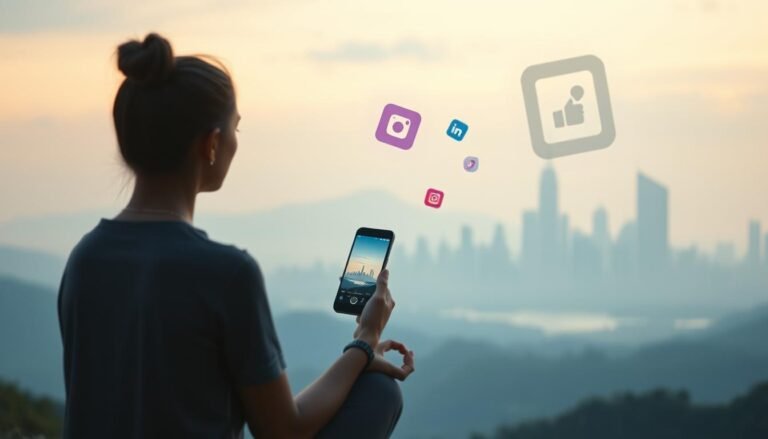
Introduction
In a world increasingly dominated by technology, the way we perceive, interpret, and interact with our surroundings is evolving at breakneck speed. The Intersection of Visual Attention and Technology: Where AI Meets Human Perception is not just a trending topic; it is essential for understanding our future. As artificial intelligence integrates with human cognitive processes, we need to understand how visual attention works and how technology can amplify, alter, or even diminish it.
This article delves deeply into this fascinating realm, exploring how AI captures human attention, enhances experiences, and frequently blurs the lines between human perception and machine efficiency. Along the way, we will highlight impactful case studies and provide valuable insights into how we can navigate this complex landscape.
Understanding Visual Attention
Visual attention refers to the cognitive process of selectively concentrating on specific visual information while ignoring other stimuli. Imagine watching a movie with multiple simultaneous scenes; your ability to focus on one character’s expression while peripheral activities fade into the background illustrates visual attention’s crucial role.
Key Components of Visual Attention
1. Selective Attention: This allows individuals to focus on specific stimuli while disregarding distractions. For instance, in advertising, marketers need to capture consumers’ selective attention to convey their message effectively.
2. Sustained Attention: The ability to maintain focus over prolonged periods. This is particularly relevant in high-stakes environments such as medical diagnostics and air traffic control.
3. Divided Attention: The ability to process multiple stimuli simultaneously. While often seen as a multitasking skill, divided attention can lead to decreased efficiency and performance.
AI and the Mechanics of Attention
Artificial intelligence has opened new avenues to understand and optimize visual attention. Let’s examine some key domains where The Intersection of Visual Attention and Technology: Where AI Meets Human Perception manifests most vividly.
Case Study: Eye Tracking in Marketing
One of the most illustrative examples of AI enhancing visual attention is eye-tracking technology. Eye tracking utilizes sensors and cameras to monitor where a viewer’s gaze falls on a visual field—typically an advertisement or a website.
Findings from Recent Research:
| Feature | Percentage of Attention |
|---|---|
| Main Headline | 35% |
| Images | 50% |
| Call-to-Action Buttons | 15% |
This research highlights how visuals can be tailored to capture attention effectively. For marketers, understanding these metrics allows them to design ads that are more engaging and impactful.
The Role of Algorithms in Visual Attention
Machine learning algorithms analyze vast datasets to discern patterns in visual attention. By understanding what catches the eye, these algorithms can optimize content delivery—be it in social media feeds or e-commerce platforms.
Emotional Engagement and AI
AI-Driven Personalization
The integration of AI has enabled hyper-personalization in visual content. When users receive tailored recommendations based on their visual preferences, engagement levels soar. Imagine scrolling through an app that curates only those images and videos most aligned with your interests; this is a clear manifestation of The Intersection of Visual Attention and Technology: Where AI Meets Human Perception.
Case Study: Netflix’s Recommendation Engine
Netflix utilizes sophisticated algorithms to analyze viewer behavior and suggest tailored content. They monitor how long users watch particular genres, which trailers they click on, and even the time of day they’re most likely to engage with specific titles.
Impact on Viewership:
- Subscriptions increased by 30% post-implementation of AI-driven personalization strategies.
- User engagement (time spent watching) improved by 25%.
These statistics not only underscore the efficacy of AI in reader engagement but also highlight how understanding visual attention can lead to better user experiences.
Ethical Considerations
While the benefits of exploiting the intersection of visual attention and technology are evident, ethical considerations abound. Privacy concerns arise when AI algorithms track user behavior, raising questions about consent and the ethical use of data.
Balancing Attention Capture with Responsibility
It’s tantalizing to harness visual attention for business growth, yet companies must remain transparent about how data is used. Striking a balance between driving engagement and respecting user privacy is the crux of ethical marketing.
Future Prospects
As we look ahead, The Intersection of Visual Attention and Technology: Where AI Meets Human Perception will likely lead to even more sophisticated applications. The rise of virtual and augmented reality will fundamentally change how visual attention is captured and utilized.
Case Study: Virtual Reality Learning Environments
In educational settings, VR has been leveraged to create immersive learning experiences. By engaging multiple senses, these environments capture attention unlike traditional methods. A recent study found that students in VR settings scored 40% higher on retention tests than those in standard classrooms.
Conclusion
The interplay between visual attention and technology is robust and multifaceted, offering exciting avenues for innovation, engagement, and ethical considerations. As we plunge deeper into The Intersection of Visual Attention and Technology: Where AI Meets Human Perception, it becomes clear that while technology may co-opt our attention, it can also enhance our perceptual capacities—leading to more meaningful interactions with the world around us.
In navigating this evolving landscape, consider how you can leverage these insights in your daily life, whether in marketing, education, or personal development. Stay curious and proactive, and you will be better equipped to thrive in a world where technology shapes the visual experiences we encounter.
FAQs
1. How does AI affect my attention span while using digital devices?
AI algorithms curate content based on your preferences, potentially leading to shorter attention spans due to information overload. However, they can also bolster engagement by presenting meaningful and relevant content.
2. What are the ethical implications of using visual attention tracking?
While tracking user attention can enhance user experience, it raises concerns around privacy and data misuse. Companies need to adopt transparent practices and ensure informed consent.
3. Will technology reduce our ability to concentrate?
There’s a risk; as technology captures our attention, it could lead to habitual partial attention. However, well-designed tech applications can enhance focus by streamlining processes and reducing distractions.
4. How can businesses leverage visual attention for effective marketing?
Businesses can use eye-tracking technology to optimize their visuals and prioritize information that captures attention, ultimately guiding product placement and marketing strategies.
5. Is AI-driven personalization always beneficial?
While personalization can enhance user experience, it can also lead to a ‘filter bubble,’ limiting exposure to diverse ideas and perspectives. Balancing personalization and variety is crucial.
Embark on your journey of exploration at The Intersection of Visual Attention and Technology: Where AI Meets Human Perception. With thoughtful engagement and ethical insights, we can embrace a transformative future enriched by technology.
















